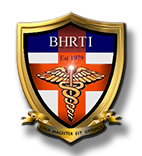
Dan Jones – author of Advanced Ericksonian Hypnotherapy Scripts
Your legendary hypnotherapy courses are the most highly regarded in the field
Kerin Webb – author of The Language Pattern Bible
You are the leaders in indirect Ericksonian Hypnosis
Dr Ernest Rossi – author with Milton H Erickson of the Collected Papers of Milton H Erickson
Stephen Brooks and the art of Compassionate Ericksonian Hypnotherapy surely sets the highest standard.
Bill O’Hanlon – author of Taproots, Solution-Oriented Hypnosis and a Guide To Trance-Land.
Stephen Brooks knows how to do effective Ericksonian Hypnosis and teach others how to do it.
Ivan Tyrrell – author of How To Master Anxiety
You are very creative with words, you talk to different parts of a patient's mind, it’s so powerful!
Igor Ledochowski – author of The Deep Trance Training Manual
Your training is unique, refined and dynamic, making each person feel an active part of the course
Adam Eason – author of The Science of Self Hypnosis
Your course was eye opening, heartfelt and transforming for me personally and professionally
RECENT BLOG POSTS
Combining hypnotherapy with CBT helps women receiving radiotherapy treatment for breast cancer
Research published in the Journal of Clinical Psychology suggests that hypnotherapy combined with cognitive behavioural therapy is more effective in treating patients undergoing radiotherapy treatment for cancer than either technique on its own. The application of hypnotherapy and other therapies such as cognitive behavioural therapy specifically for patients receiving radiotherapy for cancer has not yet been fully explored or researched. However, recent research into the use of cognitive behavioural therapy combined with hypnosis has proved very beneficial for women receiving radiotherapy for breast cancer. Research combining CBT with hypnotherapy indicates that relative to a standard control group, participants receiving CBTH demonstrated significantly lower levels of negative affect each week of treatment and significantly higher levels of positive affect in weeks one, two, three and five of the radiotherapy treatment. Additionally there was an increased frequency of days where the positive affect was greater than the negative affect. The combined use of CBT with hypnotherapy not only reduced the negative effect of worry, anxiety and negativity, but increased the positive affect of confidence, well-being and relaxation. The results seen are not only statistically significant but clinically important as the results of the research are consistent with previous literature demonstrating the beneficial
How should CBT be integrated with hypnotherapy?
I want to comment on a post I made recently about the effectiveness of using CBT with hypnosis. In that post it mentions how research has confirmed that CBT and hypnosis, when used together, are more effective than either approach applied separately when treating women with breast cancer. Something we must consider when we think about integrating therapy techniques, is the degree to which one technique influences the other. For example hypnosis itself is not a therapy. Hypnosis when combined with psychotherapy becomes hypnotherapy, in other words it is psychotherapy utilising the hypnotic state, but hypnosis on its own is not a psychotherapy, it is only a means to an end. So in the research, what did hypnotherapy, or hypnosis actually contribute to the effectiveness of CBT? Likewise CBT is a therapy, but it lacks the power of hypnosis to get patients to instantly change beliefs, perception and behaviour or to commit to the procedures and outcomes of therapy. In the previous post the conclusions were that CBT helped patients reduce their worries and anxieties while the hypnotherapy helped patients feel more relaxed and optimistic. I believe that in this research, hypnotherapy was not being used as psychotherapy, or even
Hypnosis as sole anaesthesia for skin tumour
Research published in 2014 by the Association of Anaesthetists of Great Britain and Ireland and carried out at the Department of Neurosciences University of Padua, and the Italian Center for Clinical and Experimental Hypnosis in Turin Italy has demonstrated that clinical hypnosis can alter the perception of pain in surgery and help patients deal with surgical stress. The research recommends that in selected cases hypnosis can be as effective as anaesthetic drugs. A female patient with extreme sensitivity to chemicals who had experienced previous reactions to local anaesthetic was admitted for the removal of a thigh skin tumour using hypnosis as the sole means of anaesthesia. The hypnotic intervention included hypnotically focused analgesia utilising a pre-operative pain threshold test to measure sensitivity to pain. After the induction of hypnosis, a wide excision was performed, preserving the deep fascia and the tumour was removed. Throughout this time the patient’s heart rate and blood pressure did not fluctuate. After the patient was brought out of hypnosis she experienced no pain and was discharged. It is important that we look at when, and when not, to remove sensitivity to pain. Pain is a message that says, ‘please take care of this part of the

